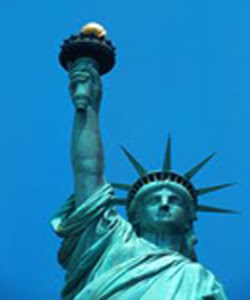Around 1865, as the American Civil War drew to a close, the French historian Edouard de Laboulaye future that France create a statue to give to the United States in festivity of that nation's achievement in building a viable democracy.
The sculptor Frederic Auguste Bartholdi, known for large-scale sculptures, earned the charge; the goal was to design the statue in time for the centennial of the statement of Independence in 1876.
The project would be a joint attempt between the two countries the French populace were accountable for the statue and its congregation, while the Americans would build the base on which it would stand and a demonstration of the friendship between their peoples.
Due to the need to raise funds for the statue, work on the monument did not begin until 1875. Bartholdi’s enormous creation, titled "Statue of Liberty informative the World," depict a woman holding a torch in her raised right hand and a tablet in her left, upon which was imprinted "July 4, 1776," the adoption date of the statement of autonomy.
Assembly and Dedication of Liberty Statue:
While work went on in France on the definite statue, fundraising efforts sustained in the United States for the base, including contests, benefits and show. Near the end, the most important Washington newspaperman Joseph Pulitzer used his paper, the World, to raise the last essential funds.
Designed by the American architect Richard Morris Hunt, the statue's base was constructing within the courtyard of Fort Wood, a stronghold built for the War of 1812 and positioned on Bedloe's Island, off the southern tip of Manhattan in Upper New York Bay.
